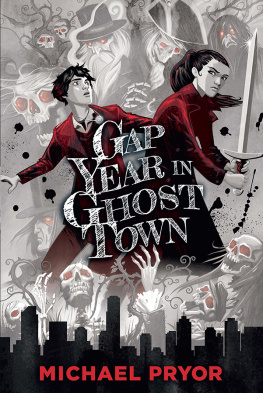BALTIMORE
BALTIMORE
A Political History
MATTHEW A. CRENSON

2017 Johns Hopkins University Press
All rights reserved. Published 2017
Printed in the United States of America on acid-free paper
9 8 7 6 5 4 3 2 1
Johns Hopkins University Press
2715 North Charles Street
Baltimore, Maryland 21218-4363
www.press.jhu.edu
Library of Congress Cataloging-in-Publication Data
Names: Crenson, Matthew A., 1943 author.
Title: Baltimore : a political history / Matthew A. Crenson.
Other titles: A political history
Description: Baltimore : Johns Hopkins University Press, [2016] | Includes bibliographical references and index.
Identifiers: LCCN 2016025744| ISBN 9781421422060 (hardcover : alk. paper) | ISBN 9781421422077 (electronic) | ISBN 1421422069 (hardcover : alk. paper) | ISBN 1421422077 (electronic)
Subjects: LCSH: Baltimore (Md.)History. | Baltimore (Md.)Politics and government. | Baltimore (Md.)Race relations.
Classification: LCC F189.B14 C74 2016 | DDC 975.2/6dc23
LC record available at https://lccn.loc.gov/2016025744
A catalog record for this book is available from the British Library.
Special discounts are available for bulk purchases of this book. For more information, please contact Special Sales at 410-516-6936 or specialsales@press.jhu.edu.
Johns Hopkins University Press uses environmentally friendly book materials, including recycled text paper that is composed of at least 30 percent post-consumer waste, whenever possible.
To Mac, Maxine, Gus, and Sam
CONTENTS
BALTIMORE
PROLOGUE
M Y PARENTS MOVED to Baltimore from the Bronx before I was born. I learned to talk from them. Their kind of talk marked me indelibly as a foreigner in Baltimore, where the local accent was practically a whole different language. This and my family connections in New York prevented me from becoming fully Baltimorean.
At age 20, I left for Chicago, where I soon began to have repeated dreams about various Baltimore street intersections. Much later, I learned what the dreams may have meant. Urban geographer Robert Sack writes that the sense of place usually lies below the level of conscious thought so long as you occupy your place. By remaining subconscious, it serves a practical purpose. Place-bound inhabitants can concentrate more fully on going about their business because they need not think much about where they are while going about. Sack adds, however, that the sense of place rises into consciousness once you leave your place or lose it. That, apparently, is why my dreams of Baltimore emerged when I reached Chicago. I had discovered my sense of place.
The sense of place, of course, is not just a dream. Students of placehood frequently describe it as the personality of a location,
Urban sociologists have attempted to identify the mechanisms by which cities acquire and maintain distinctive characters or traditionsapproximations of Hungerfords urban personalities. Stated simply, they suggest that the past constrains the present. Past events and decisions
History, in other words, endows places with personalities. Human geographer Yi-fu Tuan maintains that the ownership of a particular history distinguishes meaningful place from featureless space. Space, writes Tuan, is that which allows movement. Place emerges when movement is suspended and we come to rest: place is pause; each pause in movement makes it possible for location to be transformed into place.
Still, for Casey and Tuan, the particularity of place remains peculiarly abstract. They are not unusual. Theorists of urbanism discuss the particularity of place without concentrating on any place in particular. The sense of place is essential to our experience of cities, but its particularity is an inconvenient distraction for any enterprise that seeks theoretical generalizations about cities or explanations of urban life at large. Recent movements in urban history, sociology, and political science have all tended to marginalize placehood.
The particularity of local politics is all but dismissed. Restrictions imposed by state and federal governments constrain cities from above, as do the requirements that come with intergovernmental grants-in-aid. Variability among cities is further limited by their competition with one another for corporate and individual taxpayers, jobs, and capital investment. Significant deviations in tax rates, subsidies, and policies tend to diminish as cities jockey with one another to offer inducements to current and prospective residents that can match those available in other towns.
In spite of these constraints on the variability of urban politics, it was the political particularities of Baltimore that became compelling for me after I woke from my dreams of its intersections and found myself in Chicago. Chicago showed that what I had barely noticed or understood about Baltimore was distinctive and meaningful. Racial struggle was harsh and aggressive in Chicago, but strangely subdued in Baltimore, even though African Americans made up a much larger portion of its population. As an undergraduate in Baltimore, I had written a research paper on neighborhood Democratic clubs. When I tried to do the same in Chicago, I was asked whether I had been cleared by city hall.
It was thenalmost 50 years agothat I began to collect material for this book about the political history of Baltimore, though at the time I had no idea that there would ever be a book. Local politics seemed especially expressive of the particularity of place. Political institutions provide an arena of engagement for the entire population of a town, and virtually every aspect of place and population is a potential
My awareness of Baltimores particularity advanced when I left Chicago to spend a year just across the Charles River from Boston, and then a year in Washington, DC. Once I returned to Baltimore, I noticed that local conversations frequently turned toward the puzzling hold that the town seemed to exercise over its residentspeople like me. Still later, I looked for explicit indicators of Baltimores distinctive status. Wikipedia, for example, provides a list of neighborhoods for almost every major city in the United States. Because neighborhood identities are imprecise, their enumeration is necessarily uncertain, as is Wikipedia. But Baltimores status as an outlier is so pronounced that it overcomes imprecision. The size of Bostons population, for example, is not much different from Baltimores. It has 105 neighborhoods. Milwaukee, Memphis, Denver, and Oklahoma City are also similar in size to Baltimore. According to Wikipedia, Milwaukee has 50 neighborhoods; Denver, 78; Memphis, 70; Oklahoma City, 25. Baltimore has 300. Even Chicago, the so-called City of Neighborhoods, with three times the land area and four times the population of Baltimore, has only 245 neighborhoods.
Baltimore has often been described as quirkyusually by outsiders. Baltimoreans, who live with the quirks every day, are less likely to comment on them. In a Google experiment of questionable scientific status, I paired the word quirky with the names of 20 randomly chosen American cities in a search to find out whether Baltimore was linked with quirky more frequently than other towns. Baltimore finished second after New York, but not by much. At 2.84 million matches with quirky, it was only 80,000 quirks (about 6 percent) shy of New York. Atlanta was next after Baltimore, with over 200,000 fewer quirky citations. Baltimores 300 neighborhoods may figure in its quirkiness by offering a multiplicity of arenas for the development of eccentricity. Or perhaps the quirkiness of Baltimoreans prevents them from living together in anything less than 300 neighborhoods.
Next page









